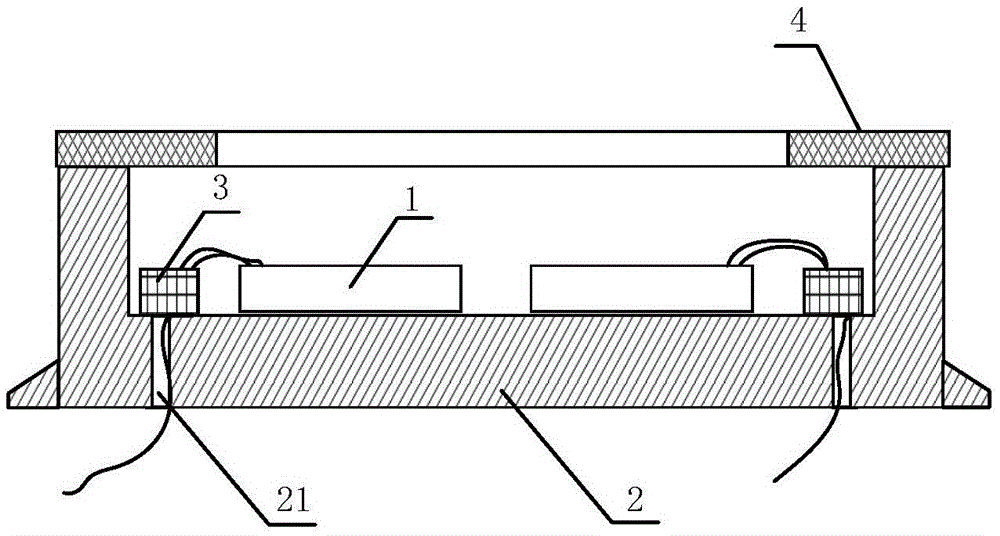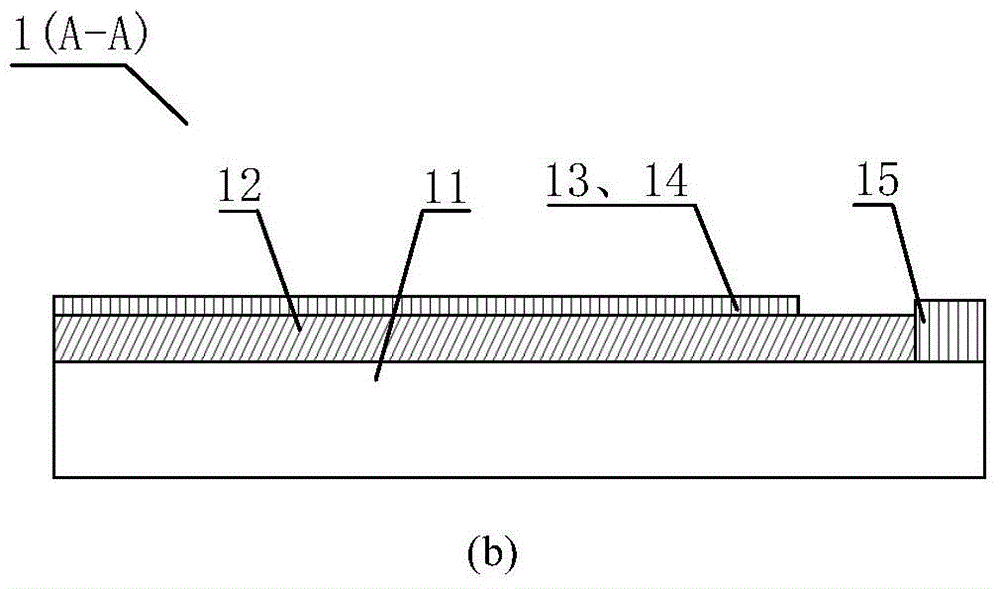Detector probe and sensor preparation method for micro space debris detection
A technology of tiny space and detectors, which is applied in the direction of instruments and geophysical measurements, etc., can solve problems such as inconvenient electrode extraction and installation, easy damage of thin aluminum electrodes, failure of detector probes, etc., so as to avoid probe failure and improve yield rate High, clear wiring effect
- Summary
- Abstract
- Description
- Claims
- Application Information
AI Technical Summary
Problems solved by technology
Method used
Image
Examples
Embodiment Construction
[0048] The present invention will be described in detail below with reference to the accompanying drawings and examples.
[0049] The invention provides a MOS detector probe for detecting tiny space debris, such as figure 1 As shown, the MOS detector probe includes a sensor 1 , a base 2 , an electrode lead-out plate 3 and a top plate 4 . The sensor 1 and the electrode lead-out plate 3 are installed in the cavity formed by assembling the base 2 and the top plate 4 .
[0050] ●Sensor
[0051] As shown in Fig. 2 (a) and Fig. 2 (b), sensor 1 is made of substrate 11, a silicon dioxide dielectric layer 12 on one side of the substrate, and on the silicon dioxide dielectric layer, prepared by metal aluminum, The sensitive area 13, the top electrode 14 and the bottom electrode 15 are formed on the same surface. The sensitive area 13 is in contact with the top electrode 14 , which may be an integrally formed thin aluminum layer, and the bottom electrode 14 is not in contact with the ...
PUM
 Login to View More
Login to View More Abstract
Description
Claims
Application Information
 Login to View More
Login to View More - R&D
- Intellectual Property
- Life Sciences
- Materials
- Tech Scout
- Unparalleled Data Quality
- Higher Quality Content
- 60% Fewer Hallucinations
Browse by: Latest US Patents, China's latest patents, Technical Efficacy Thesaurus, Application Domain, Technology Topic, Popular Technical Reports.
© 2025 PatSnap. All rights reserved.Legal|Privacy policy|Modern Slavery Act Transparency Statement|Sitemap|About US| Contact US: help@patsnap.com



